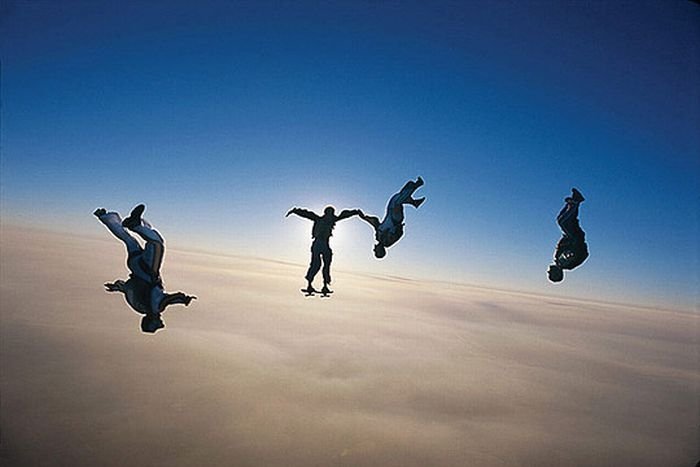|
|
Skydiving Photography
|
A drop zone operator at a sky diving airport operates one or more aircraft that takes groups of skydivers up for a fee. An individual jumper can go up in a light aircraft such as a Cessna C-172 or C-182. In busier drop zones (DZ) larger aircraft may be used such as the Cessna Caravan C208, De Havilland Twin Otter DHC6 or Short Skyvan.
A typical jump involves individuals exiting an aircraft (usually an airplane, but sometimes a helicopter or even the gondola of a balloon), at anywhere from 1,000 to 4,000 meters (3,000 to 13,000 feet) altitude. If jumping from a low altitude, the parachute is deployed immediately, however, at higher altitudes, the skydiver may free-fall for a short period of time (about a minute) before activating a parachute to slow the landing down to safe speeds (about 5 to 7 minutes).
When the parachute opens (usually the parachute will be fully inflated by 800 meters or 2,600 feet) the jumper can control the direction and speed with toggles on the end of steering lines attached to the trailing edge of the parachute, and can aim for the landing site and come to a relatively gentle stop. All modern sport parachutes are self-inflating "ram-air" wings that provide control of speed and direction similar to the related paragliders. Purists in either sport would note that paragliders have much greater lift and range, but that parachutes are designed to absorb the stresses of deployment at terminal velocity.
By manipulating the shape of the body in freefall, a skydiver can generate turns, forward motion, backwards motion, and even lift.
|
|









